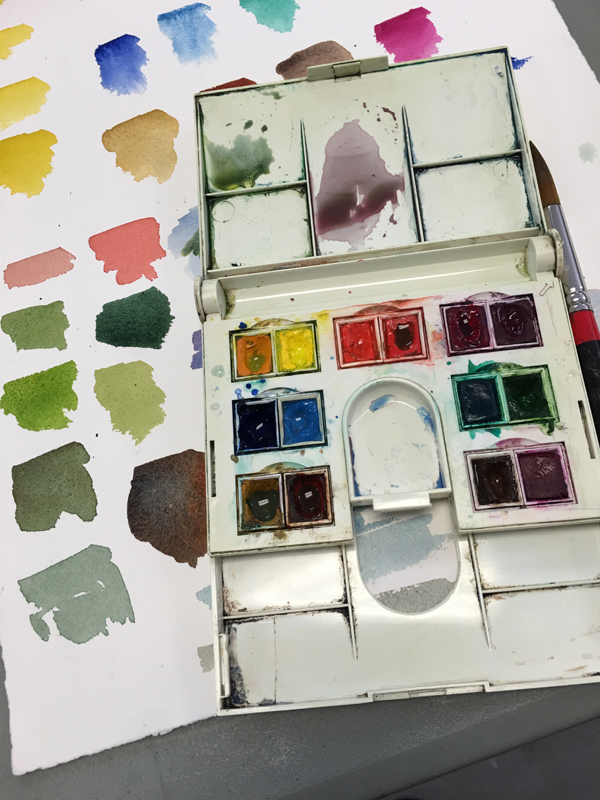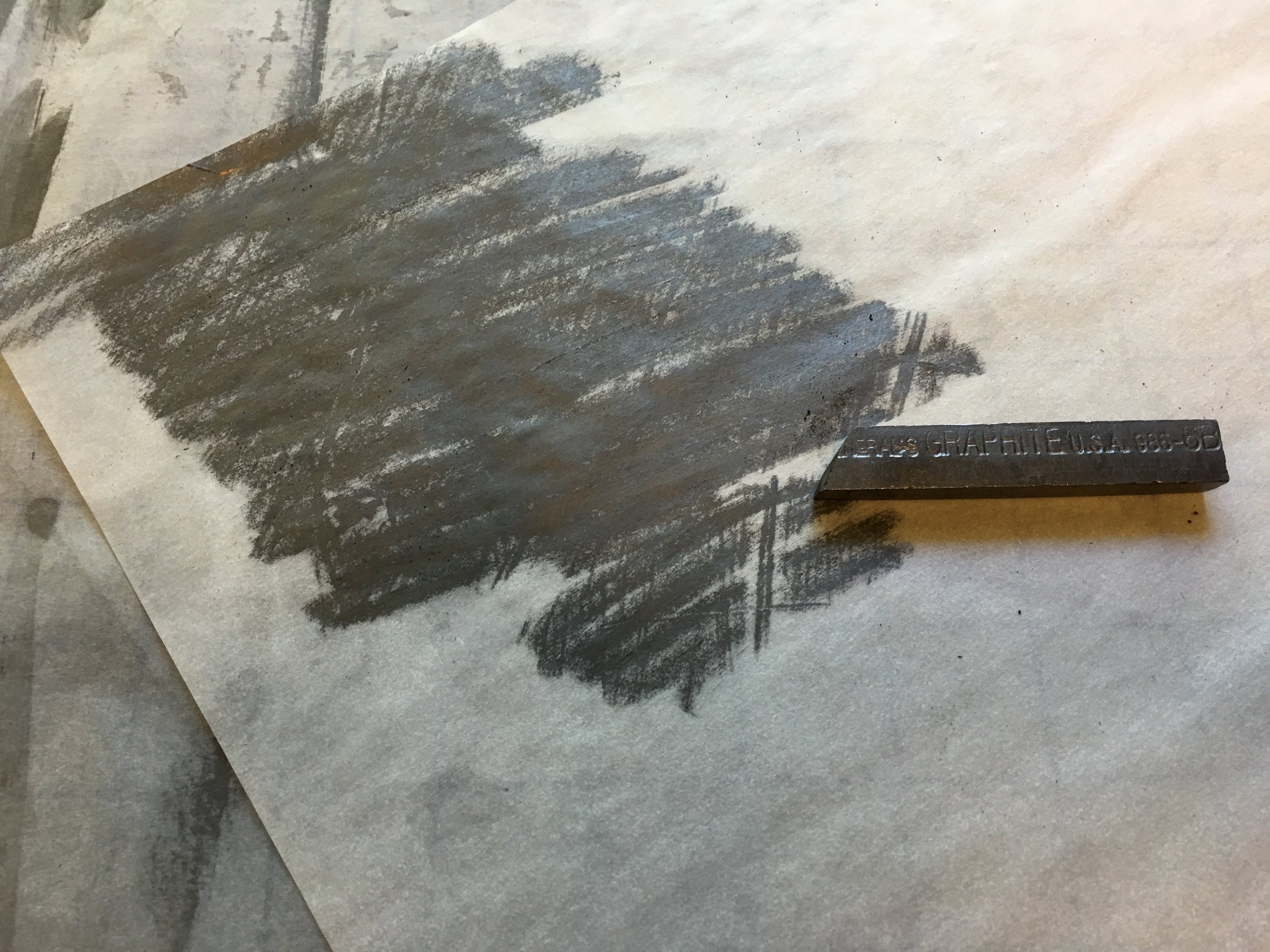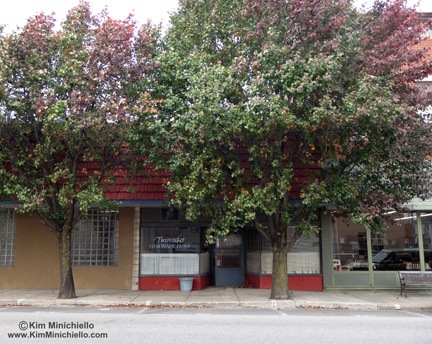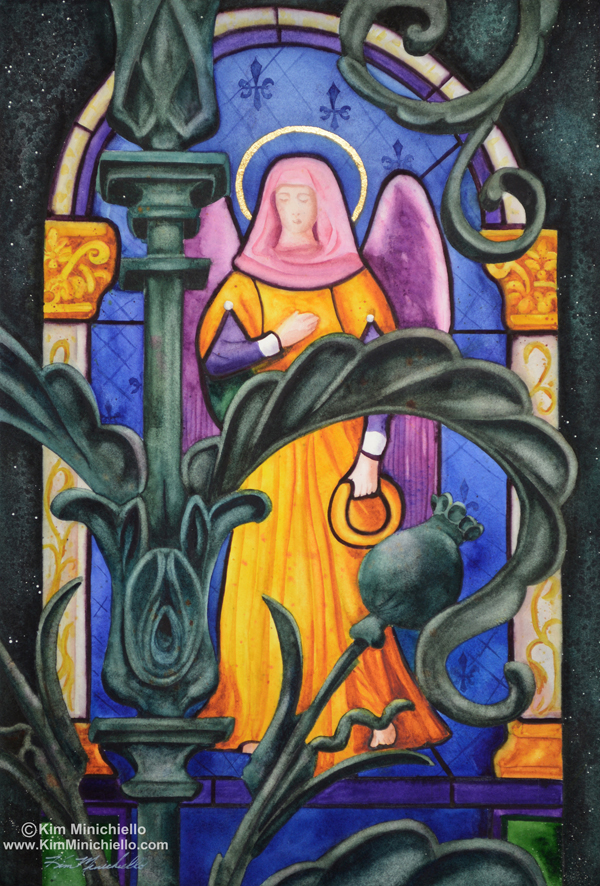I had ordered a tube of Windsor Newton's New Gamboge before the workshop to replace the tube I had used up and when it came I sent it right back, It just didn't seem right for my palette. I feel the Daniel Smith New Gamboge, is a bit too orange and not the warm yellow I need. Now I'm on a mission to find a new warm yellow.
A couple of weeks ago I bit the bullet and finally ordered a set of the Daniel Smith Dot Cards, which I have wanted to do for a long time! Four cards total have a dot of paint of every paint they have in their line. Just wet with a brush and you have an actual sample!!!! I wish every manufacturer did this! How great is it to need a color and know exactly what you are going to get! I have a few Daniel Smith colors in my palette. I have purchased quite a few and those I've liked have stayed and I use often and others I use occasionally, but still love them for different purposes. Now there is no spending money and hoping that I like what I get, at least with Daniel Smith.
So now back to needing to find a new New Gamboge. Comparing the Windsor & Newton New Gamboge, the old formula that I like, to the samples on my Daniel Smith Dot cards, I feel that their Hansa Yellow Deep will be a good substitute! Problem solved.
The cards are $25 plus shipping. I feel it's money well spent. You get dots of all 238 colors in their line. It was so much fun to wet them all to see what color was going to emerge, you could also sense the behavior of the paint, did it move fast or take a while to get the pigment going. I can guess the value range right away for each color, saw some new colors I would like to try, saw some I thought I was interested in but maybe not after getting the dot card, which will save me money in the long run. And if I'm looking for a new color for a particular painting or want to try something new, I'll be more inclined to look at my dot cards, and perhaps order Daniel Smith. Lastly, they are just so cool to look at! Really, the only paint manufacturer out there where you can actually truly sample a color without buying a whole tube of paint!
You go Danial Smith! Why didn't I order these sooner?








































